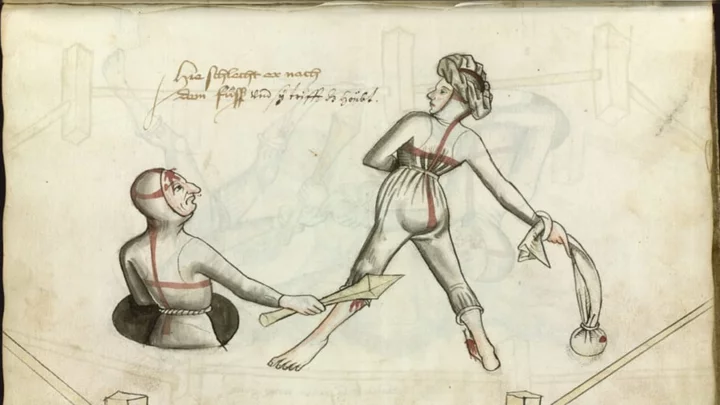The death of Queen Elizabeth II left Denmark’s Queen Margrethe II the only woman monarch in Europe. But in the coming decades, five princesses are expected to ascend the thrones of Belgium, the Netherlands, Norway, Spain, and Sweden.
The unprecedented number of queens-in-waiting stems from updated succession laws in four of the previously mentioned countries—all but Spain—that allow a monarch’s daughter to keep her place in the line of succession ahead of any younger brothers. To keep pace with changing attitudes and facilitate gender equality, these countries scrapped centuries of male primogeniture, in which sons come before daughters in the line of succession, for absolute primogeniture. This means the monarch’s eldest child is next in line for the throne, regardless of whether that child is male or female.
Sweden took the lead, amending its succession law in 1979, with the other countries following in the 1980s and 1990s. “I think [the succession law change] was moving in the spirit of the times in that there has in recent decades been a much, much stronger interest in gender equality—you see a push for that in corporate boardrooms, in public bodies, in Congress and lots of other institutions,” Robert Hazell, co-editor of the 2020 book The Role of Monarchy in Modern Democracy: European Monarchies Compared, tells Mental Floss.
As they prepare to become queens of their countries and players on the world stage, these five princesses face modern struggles as both future sovereigns and women in the 21st century. Adorned in glamorous gowns and sparkling jewels, princesses are typically viewed as the embodiment of royal magic. But in reality, the lives of future queens are not all tiaras and good hair days.
While they live immensely privileged existences, queens-to-be go through puberty, school, dating, marriage, and motherhood, all in the media spotlight. And the face pressure to look great while doing it—royal women are subject to constant sartorial scrutiny that their male counterparts rarely receive. “Bloggers are not going to do a blog about what a crown prince is wearing,” Marlene Koenig, a blogger on British and European royalty, tells Mental Floss. Princesses, on the other hand, tend to be good for business because fans will often rush to buy copies of their clothing, resulting in the clothing designers and retailers making money.
Women heirs to the throne are raised to embrace a life of service, which can be fulfilling but strictly mapped out, from their education to military training to charitable endeavors. Marriage also presents hurdles; finding the right partner involves practical considerations for both male and female heirs. “There’s a real difficulty for royals in finding a suitable marriage partner because their lives are so constrained and the invasions of their privacy are so intense and unceasing that many sane individuals, however fond they might be of the royal in question, would not want to commit the rest of their lives to living so much in the public eye,” Hazell says.
Women monarchs-to-be may have an even greater difficulty finding the right person to marry and raise a family with because their husband’s role will be uniquely constraining. The public is used to a king’s queen consort playing a traditional supporting role. But as Hazell notes, it may be harder for a man to take on the subordinate role.
Succession law amendments aside, nearly all of the countries poised to see a woman reign have had ruling queens in the past—except for Belgium—and the prospect of a queen on the throne is an accepted fact. “I don't think it’s seen anymore as revolutionary because [the princesses] are being prepared in the same way as if they were [princes]. There’s no difference,” Koenig says.
In other words, five women waiting to ascend the throne is both noteworthy and royal business as usual. Here are the princesses preparing to reign.
1. Crown Princess Victoria of Sweden
Victoria, the Crown Princess of Sweden and the eldest child of King Carl XVI Gustaf and Queen Silvia, was born in 1977. She is expected to become Sweden’s fourth queen and the country’s first woman ruler since the early 18th century.
At age 46, Victoria is the only member of Gen X in the group. That means she grew up before the age of social media, with a degree of privacy the other four princesses will never know. Victoria has studied in France, the United States, and Sweden, where she earned a bachelor's degree in peace and conflict studies at Uppsala University. She also spent time working in various government offices and underwent basic military training in the Swedish Armed Forces.
Victoria married Swedish fitness trainer Daniel Westling in 2010, who is now known as Crown Prince Daniel. They have two children: Princess Estelle, 11, and Prince Oscar, 7. Estelle is second in the line of succession after her mother, the first Swedish princess to be designated heir apparent from birth. Until 1980, boys jumped to the head of the Swedish royal line of succession over their older sisters. Carl XVI Gustaf, for example, became king in 1973 even though he has four older sisters.
The law changed when Sweden’s parliament passed the 1979 Act of Succession to facilitate royal gender equality. The parliament also made the new law retroactive, which caused a stir. Victoria’s younger brother, Carl Philip, was born four months before the law passed. The boy had already been named Crown Prince, but under the new law, Victoria replaced Carl Philip as heir apparent. Carl XVI Gustaf has stated, as recently as January 2023, that he disagrees with the law being applied retroactively, but added that he supports Victoria in her role as Crown Princess.
2. Princess Elisabeth of Belgium
In Belgium, Elisabeth, the Duchess of Brabant (the title given to the Belgian heir apparent) is expected to become Belgium’s first queen. The 22-year-old—the eldest of the Gen Z princess on this list—is the daughter of King Philippe and Queen Mathilde, and has been training for this role since she was a tween.
At age 10, Elisabeth carried out her first official royal engagement, appearing at the opening of her namesake Princess Elisabeth Children’s Hospital in Ghent. Her name can also be found on the Belgian scientific facility in Antarctica, the Princess Elisabeth Antarctica Research Station.
Belgium has had seven kings since winning independence from the Netherlands in 1830. Because the country changed its line of succession in 1991, Elisabeth’s younger brothers, princes Gabriel and Emmanuel, will not displace her in the line of succession [PDF]. Elisabeth also has a younger sister, Princess Eleonore.
Elisabeth’s ongoing education includes studying history and politics at Oxford University’s Lincoln College; she also earned an International Baccalaureate at UWC Atlantic College in Wales in 2020. She additionally studied social and military sciences at the Royal Military Academy in Brussels, Belgium, and attended the Yale Young Global Scholars Program at Yale University, in New Haven, Connecticut.
The press reported earlier this year on Elisabeth’s visit to Egypt with her mother and her trip to Jordan with her parents to attend the wedding of Crown Prince Hussein to Rajwa Al Saif. So far, Elisabeth has managed to live a relatively low-key life for a queen in training.
3. Princess Catharina-Amalia of the Netherlands
None of the princesses know better than 19-year-old Catharina-Amalia, the Dutch heir to the throne, that the perks of royal life come with drawbacks. Amalia, as she’s known, is the eldest child of King Willem-Alexander and Queen Máxima, and will be the fourth queen regnant since her great-great-grandmother Wilhelmina became the first queen of the Netherlands in 1890.
Amalia—who has two younger sisters, princesses Alexia and Ariane—is the first Dutch princess to have had her place in the line of succession secured since birth; she was born in 2003, two decades after the Netherlands amended its constitution in 1983 to follow absolute primogeniture. As the heir apparent, she holds the title Princess of Orange.
Amalia has publicly tried to navigate the delicate balance of carrying out her royal duties while pursuing “normal” activities for someone her age. When Amalia turned 18 in 2022, she became a member of the Netherlands’ Council of State. At the same time, the princess turned down the $1.8 million annual support she’s entitled to from the government as the heir apparent, saying she was currently doing nothing to earn it. That same year, Amalia began studying at the University of Amsterdam to earn a degree in Politics, Psychology, Law and Economics.
However, the princess’s university experience quickly took a frightening turn when a Dutch criminal group threatened to kidnap and assassinate her. Amalia moved back in with her parents in the royal palace in The Hague near Amsterdam and now attends lectures with a security escort. She has said she misses the freedom she had as a student living on her own.
4. Princess Ingrid Alexandra of Norway
Princess Ingrid Alexandra, age 19, is second in line to the throne of Norway, after her father, Crown Prince Haakon. She is expected to become the second queen of Norway, although she would be the first Norwegian-born woman monarch. Margaret I—who reigned in the late 14th and early 15th centuries over the union of Norway, Denmark, and Sweden—was born in Denmark.
Because Norway amended its constitution in 1990 to follow absolute primogeniture, Ingrid Alexandra remains ahead of her younger brother, Prince Sverre Magnus, in the line of succession. [PDF].
Like the other princesses, Ingrid Alexandra balances her official life with personal pursuits. In 2016, the then-12-year-old princess lit the cauldron at the opening ceremony of the Youth Olympics in Lillehammer and two years later christened Norway’s new research vessel, the Crown Prince Haakon. For her 18th birthday in 2022, the princess received her own office at the Royal Palace, her family’s official residence in Oslo. She also posed for her 18th birthday portrait wearing a tiara—a family heirloom—for the first time.
Education will be Ingrid Alexandra’s primary focus over the next few years, but she’ll presumably make time for some of her favorite sports, including skiing and surfing. The princess won a gold medal in the national women’s junior surfing championship in 2020. Ingrid Alexandra also went skydiving for the first time just after her 19th birthday.
5. Princess Leonor of Spain
As the heir to the throne of Spain, Princess Leonor holds the title of Princess of Asturias. She’s the eldest daughter of King Felipe VI and Queen Letizia, who also have a younger daughter named Sofia. But Leonor isn’t the country’s heir apparent—male-preference primogeniture remains at the center of Spain’s succession law. She’s considered the heir presumptive because she could be displaced should her parents have a son. However, given that the king and queen are now in their fifties, the chances of them welcoming a baby boy to the family are increasingly unlikely. Leonor is expected to become Spain’s first queen regnant since Isabella II, who reigned in the mid-19th century.
Leonor, who turns 18 later this year, recently completed a two-year high school course at the UWC Atlantic College in Wales. She will now embark on three years of military training, spending one year each at Spain’s General Military Academy of Zaragoza, Marín Naval Military School, where she will serve on board the Juan Sebastián de Elcano Training Ship, and San Javier General Air Academy. The princess is following the same path as her father, who completed similar training before he became king. She is expected to pursue a university degree after completing her military training.
Although insulated from the media to an extent because of her age, Leonor has nevertheless grown up in the spotlight. Last year, a website reported the princess had a crush on a young Spanish soccer player, FC Barcelona midfielder Pablo Páez Gavira, known as “Gavi,” noting she had adorned her school folder with photos of him. But Leonor is likely learning to how to handle press coverage—both positive and negative. Her family has weathered political and personal dramas from the abdication of her grandfather King Juan Carlos in 2014 following a corruption investigation to tension between her mother and paternal grandmother, Queen Sofia.
This article was originally published on www.mentalfloss.com as 5 European Princesses Who Are Preparing to Reign.









